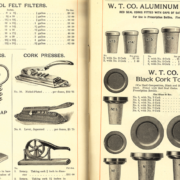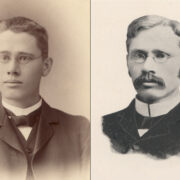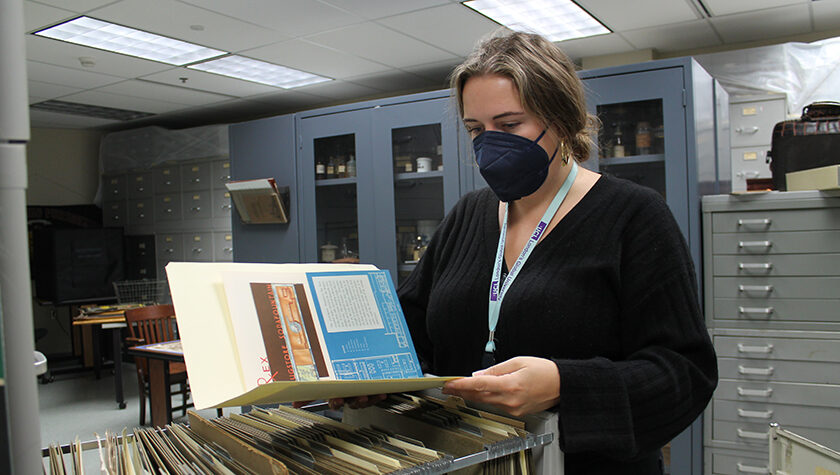
6
December

A three-year grant from the National Endowment for the Humanities helps the School and AIHP share vast historical collections
By Ben Cadigan

Where would you look to find a Martian-themed booklet advertising products from the Arlington Chemical Company, or a fan printed with the Goddess Diana advertising 666 Cold Preparation?
There’s just one answer: the Kremers Reference Files, housed within the American Institute of the History of Pharmacy (AIHP) and the University of Wisconsin–Madison School of Pharmacy.
Because of the significance of this collection, the National Endowment for the Humanities (NEH) awarded a three-year grant to Lucas Richert, associate professor in the School’s Social and Administrative Sciences Division and historical director of AIHP. Through the grant, important and under-researched items in the collection will be cataloged and digitized for an online library.
“The Kremers Reference Files’ historical material bridges the humanities and the health sciences,” says Richert, who is also the School’s George Urdang Chair in the History of Pharmacy. “The grant is fantastic for the School, AIHP, and researchers worldwide who will soon be able to access these materials digitally.”
Documenting a profession and pharmaceuticals
The Kremers Reference Files, maintained by AIHP and the School of Pharmacy, date back to the 1890s, documenting pharmaceutical history through pictures, lab records, letters, artifacts, and more. The core of the extensive collection was compiled by Edward Kremers, a former graduate, professor, and dean of the School of Pharmacy who pioneered the four-year curriculum for pharmacy school. That collection became the cornerstone of AIHP.
It is AIHP’s primary database, housing scores of information on the evolution of pharmacy. It includes the Pharmaceutical Trade Catalog Collection, which features more than 500 catalogues, tracing the history of the manufacture and wholesale of pharmaceuticals and equipment from 1829 to the 2000s. Through a digitization project that began in 2020, a portion of these catalogs are now viewable online.

“There is a great deal of ephemera — things like advertisements, brochures, pamphlets, or packaging — in the collection. Because ephemera were considered ‘throwaway’ items, much of this documentary history hasn’t been preserved,” says Hannah Swan, an archivist at the School of Pharmacy. “That means there are thousands of items in the Kremers Reference Files that don’t exist in any other research collection.”
The files also contain information on the history of pharmacy on an international level, represented in letters, pictures, prescriptions, records, and artifacts, in a continuously growing physical catalog.
“By all accounts, one of the favorite items in the collection is our Parke, Davis, & Co. materia medica cabinet, a teaching tool that contains jars with specimens of different botanicals,” says Swan, who joined the School in September to support the grant and is the only full-time archivist in a U.S. pharmacy school. “Pharmacy students would use the cabinet as identification practice — this is back in the day, when pharmaceuticals were still hand-ground in a mortar and pestle at the druggist’s shop.”
This case complements the huge number of physical artifacts in the collection — ranging from pharmaceutical equipment to bottles, boxes, and packets of medicine to a Navy pharmacist’s uniform, as well as rarities from overseas, to paint a global picture of the evolutions of pharmaceutical care.
“We hold a number of foreign pharmacy journals that are unique to our institution,” says Swan. “I recently found a few early issues of Химико-Фармацевтический Вестник (the Chemical Pharmaceutical Bulletin), a Soviet-era pharmaceutical journal published in Odessa (modern-day Ukraine) that doesn’t even seem to have survived in the Russophone world.”
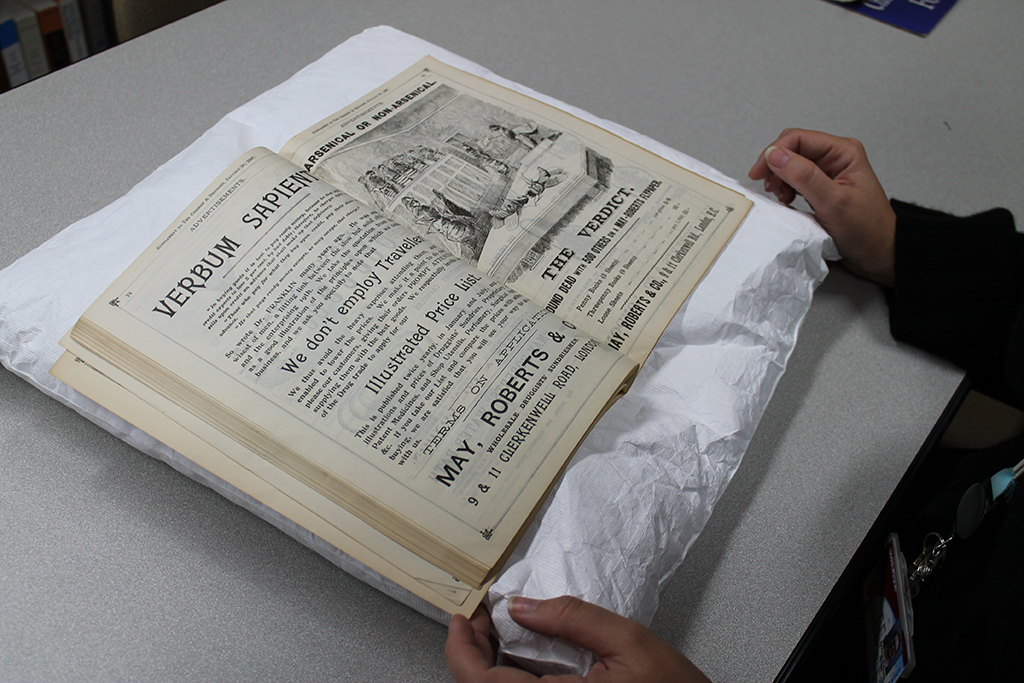
The collection continues to expand, as the AIHP welcomes information from current pharmacists about their work. Most recently, AIHP was working to collect pharmacists’ experiences of assisting their communities through COVID-19 testing and vaccination. This information is being added to the Kremers Reference Files’ biographical database, which contains information on nearly 10,000 pharmacists.
Modern debates in healthcare can be contextualized through the Kremers Reference Files, says Richert. That includes the COVID-19 pandemic, mirrored in trends seen with the 1918 flu pandemic, for example, and the longstanding anti-vaccine movement.
“These wide-ranging public debates vividly demonstrate the vital importance of grounding contemporary public health discussions in a clear understanding of their relevant histories,” says Richert. “With improved description and increased accessibility, the historical collections of the School and AIHP can help contextualize and inform contemporary understandings and debates about the history of pharmacy, pharmaceuticals, drugs, medicines, and public health.”
Expanding access
The grant from the National Endowment for the Humanities (NEH) will go toward three main goals: processing and developing finding aids for the Kremers Reference Files, launching an online catalog to make the collection accessible by researchers worldwide, and developing digital exhibitions featuring materials from the collection.
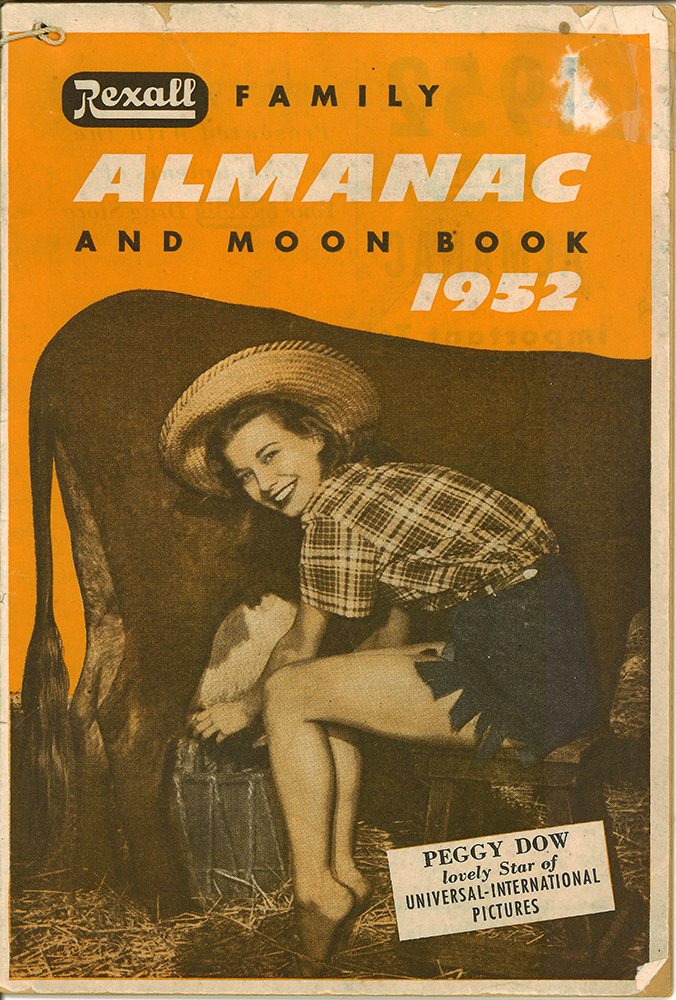
“The Kremers Reference Files are one of the most important archives of 20th century pharmaceutical retailing and manufacture in the country,” Swan says. “Corporate archives are notoriously difficult to access and pharmaceutical companies’ archives are even more closed off, so having a publicly available resource like this that traces the development of pharmacies and the pharmaceutical industry is invaluable.”
The grant, part of the NEH’s Humanities Collections and Reference Resources Grants program, was one of only 36 funded by the agency in 2022. The School received the grant in April and began work in June. The project is expected to take three years, slated for completion in 2025.
“The project will improve the intellectual control over and increase public access to a valuable but underused historical and archival collection centered on the history of pharmacy, pharmaceuticals, medicines, and public health in the United States,” Richert says.
About 1,500 items from the Kremers Reference Files will be made available online, Swan says. The online platform, hosted by CollectiveAccess, will be a library and archive catalog, a repository for the digital collections, and a platform for building and hosting digital exhibitions.
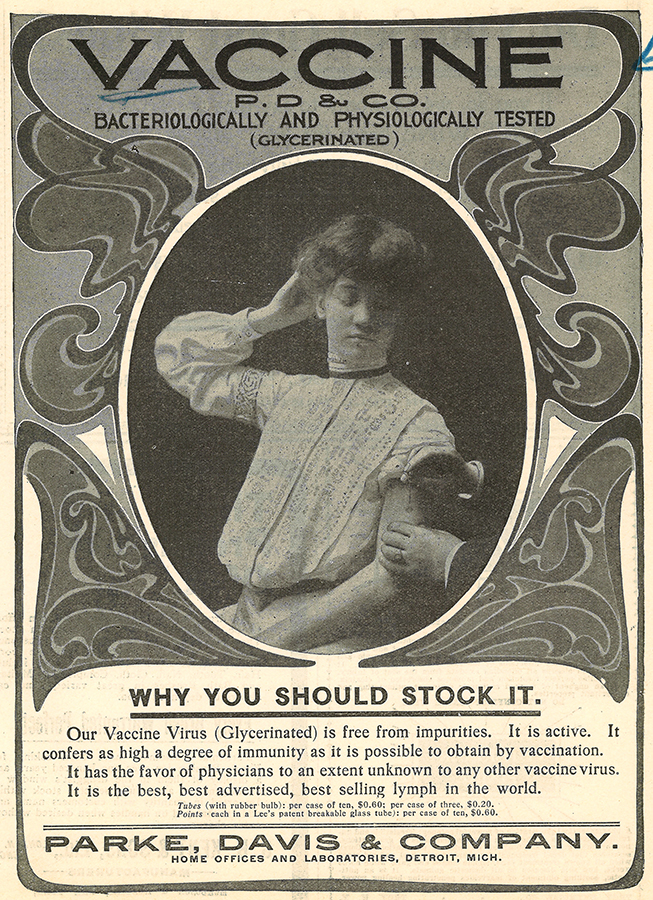
“We have already been working on various projects to digitize materials that will eventually be ingested into CollectiveAccess, as well as beginning the processing of the Kremers Reference Files, which will provide the basis for our cataloging,” says Swan. “We also have two projects in the works with the University of Wisconsin Digital Collections Center, who are helping us digitize our trade catalog collection and our Drug Topics photo collection.”
Swan says the NEH grant will also go toward preserving the collection, as she will get the chance to monitor every item in the collection and digitize them to preserve them for the future.
“I can assess the condition of the collections as I process them. As part of my work, I will have my eyes on every item in the collection — well over a million pieces of paper,” says Swan. “Having a fully processed collection means we know what we have, so we can best steward it for future generations.”


